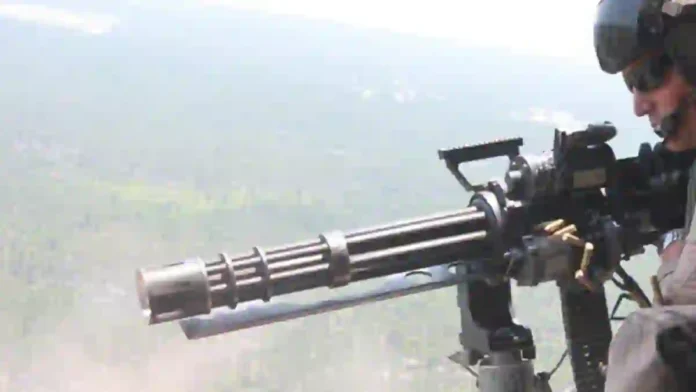The Armament Research and Development Establishment (ARDE), a key laboratory under India’s Defence Research and Development Organisation (DRDO), is spearheading the development of an advanced Gatling gun–based Close-In Weapon System (CIWS) to bolster the country’s last-line defensive capabilities against modern aerial threats.
This project is being pursued as a major step toward strengthening India’s indigenous defence ecosystem in line with the national vision of Atmanirbhar Bharat (self-reliant India).
Read- Russia Offers 5% Oil Discount To India Amid U.S. Tariff Escalations
The system, which draws parallels with globally proven counterparts such as the American Phalanx CIWS and the Dutch Goalkeeper system, aims to provide Indian defence forces with a domestically manufactured, rapid-response weapon capable of neutralizing a wide spectrum of low-altitude threats including drones, cruise missiles, precision-guided munitions, and low-flying aircraft.
At the core of this indigenous CIWS lies its multi-barrel Gatling gun architecture, designed to deliver an exceptionally high rate of fire, expected to exceed several thousand rounds per minute. This blistering rate of sustained fire ensures that incoming threats can be effectively intercepted within a very narrow engagement window, where reaction time is measured in seconds.
Complementing this gun system are advanced radar and electro-optical fire control systems, which will provide automatic detection, identification, tracking, and engagement capabilities against fast and manoeuvrable airborne objects. The dual-layer fire control suite ensures operations can continue in adverse weather conditions and low-visibility environments, thus enhancing operational reliability.
Additionally, the system is planned to feature programmable ammunition, a capability that allows rounds to be optimized against diverse categories of targets — from fast-moving aircraft and swarm drones to comparatively slower cruise missiles — thereby maximizing lethality while optimizing ammunition usage.
A defining strength of the system is its all-around 360-degree coverage, which enables the Gatling gun to detect and engage threats from any direction, a feature indispensable for modern battle scenarios where threats may emerge simultaneously from multiple vectors.
Read- Air Launched Variant of Pralay Is At An Advanced Stage of Development; Testing In The Near Future
Read- India Mulling To Order 114 Rafale To Replace Outdated Soviet Fighters
The versatility of this CIWS design lends itself to multiple deployment modes across both land and air force platforms. For the Indian Army, the system is envisaged to be integrated onto mobile wheeled and tracked air-defence platforms, capable of escorting mechanised formations on the move.
This mobility will greatly add to the Army’s short-range air defence (SHORAD) plans, providing protection against hostile UAVs, loitering munitions, and battlefield aerial reconnaissance systems.
For the Indian Air Force, static installations of the Gatling-based CIWS will be deployed to safeguard strategically important air bases, command and control facilities, ammunition depots, and radar networks — high-value assets that remain primary targets in the early stages of conflict.
Strategically, the indigenous CIWS initiative serves multiple purposes. Firstly, it helps reduce dependency on foreign suppliers, particularly as India currently fields Russian-origin systems like the AK-630 for naval CIWS roles.
Secondly, it strengthens India’s position in the broader layered air defence architecture, where the CIWS acts as the ‘last shield’ behind medium-range and long-range interceptor systems.
In the context of modern warfare, where threats like low-observable drones, massed UAV swarms, and supersonic/asymmetric missile attacks are becoming increasingly prominent, such last-resort defensive layers are indispensable. The success of this project will also open avenues for export potential, as many nations are currently seeking affordable but advanced CIWS solutions.
ARDE’s advanced Gatling gun–based CIWS represents a significant technological leap forward for India’s defence development roadmap.
With its high rate of fire, intelligent ammunition systems, advanced fire control sensors, and adaptability for diverse operational environments, it promises to form a critical component of India’s modern integrated air defence network.
Beyond its immediate tactical utility, this indigenous effort underscores a broader strategic trajectory: building a self-sustaining, technologically advanced defence industrial base capable of meeting India’s evolving security challenges in an increasingly contested battlespace.
IDN (With Agency Inputs)
Agency




